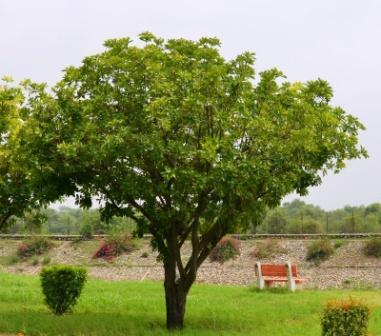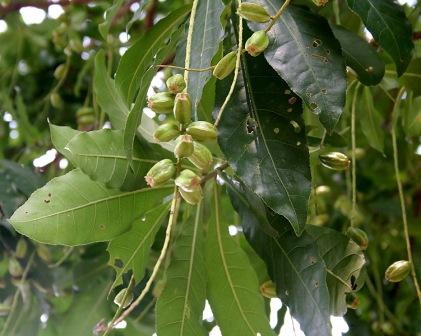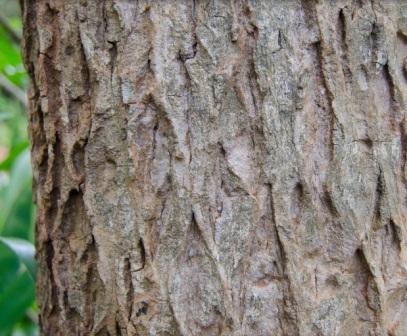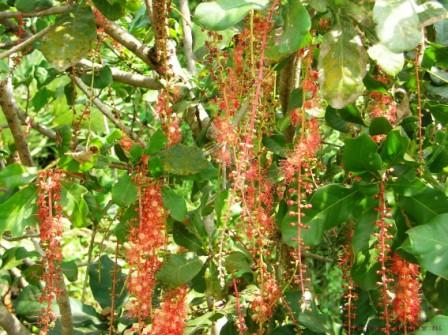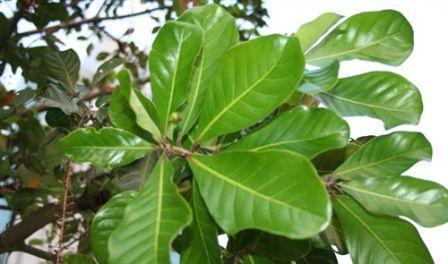Natural Regeneration :
Artificial Regeneration :
- Artificial reproduction is common by Nursery raised seedlings.
Seed collection and Storage :
- Flowering and fruiting: March-May.
- Pods are then dried in the sun and broken to extract the seeds and stored in gunny bags.
Seed Treatment :
- Soak the Seeds in boiled water and allow to cool for 24 hours before sowing in mother bed.
Nursery Technique :
- The seeds are broad casted in the mother bed of standard size in shade.
- Germination takes place slowly in a span of 20-25 days.
- Watering and protection of seedling from hot sun is necessary.
- The two leaf stage seedlings can be transplanted to poly bags.
Plantation technique :
Dig pits of 30 cm3.
The spacing usually resorted is 10 m x 10m for healthy growth of plants.
Planting is done in July after the commencement of rain.
Care & Disease Control :
- In early stages weeding is necessary. In second year, soil working is important.
Major uses :
- In traditional medicine, when children suffer from a cold in the chest.
- More recently it has become the focus of research for pain-killing compounds.
- It is used for boatbuilding, well construction, rice pounders, cabinet work, and carts.


